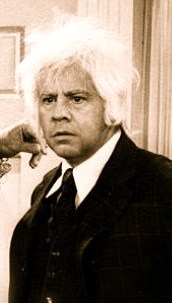![]() The Internet video revolution will increasingly be blocked by Internet Service Providers who will leverage their duopoly markets with restrictive usage limits to keep would-be video competitors from ever getting their business plans off the ground.
The Internet video revolution will increasingly be blocked by Internet Service Providers who will leverage their duopoly markets with restrictive usage limits to keep would-be video competitors from ever getting their business plans off the ground.
William Kidd, industry forecaster for iSuppli, an industry analyst group, sees a future of Internet Overcharging schemes like usage caps, overpriced pay-per-use pricing, and other limitations designed to erect roadblocks for online video content, which increasingly threatens the cable-TV products of both cable and phone companies.
The latest scheme to limit usage of streaming media come not from concerns about bandwidth costs but rather the “unknown risks” online video could have for cable and phone companies’ other products.
Such risks, Kidd believes, will compel broadband providers to increasingly implement caps in order to mitigate any long-term gambles that providers might have to take to make streaming media available to home and mobile environments.
At present, content can be streamed over TV from online service offerings such as Hulu and Netflix, or accessed through a device such as the PlayStation from Sony Corp. In addition, new-media business models continue to emerge with the introduction of new platforms that circumvent services currently provided by traditional cable or satellite pay-TV providers.
The caps planned for implementation will sink virtually all of the video streaming services that are not partnered with cable and phone companies. Kidd notes the caps he’s seen offer limited viewing — as little as three hours for wireless 200kbps video streams or standard definition video streamed on wired networks for up to 25 hours per month. True HD viewing is simply not going to happen with caps on many providers planned to cut off viewing after only seven hours.
Business plans and would-be investors must take notice of what providers have in store for would be competitors, Kidd argues. Since the phone and cable companies maintain a near-monopoly on broadband, they ultimately control what Americans can do (and see) on their broadband accounts.

Rogers reduced usage allowances on several of its broadband plans days after Netflix announced a streaming service for Canadians.
One need only look to Rogers Communications in Canada for a timely example. Rogers promptly lowered usage limits on some of its broadband plans just days after Netflix announced a video streaming service for Canadians that could directly compete with the cable giant’s video rental stores and cable pay per view services.
“These new-media business models imagine that they don’t have to pay the network through which their data traverse,” he said. “However, such a theory is directly at odds with the ambitions of cable and satellite-TV operators, which increasingly are unwilling to provide heavy data access through their networks for free—especially if a way can be found to monetize ongoing data traffic into viable revenue streams.”
In addition, new Internet-born content providers wrongfully take for granted that the way their largely free content has been consumed now also will apply in the future to premium services. The assumption is a bad one, Kidd observed, because in order for consumers to consider the Internet as a true substitute for their big-screen TV, content would need to be comparable in both technical quality and entertainment value. And to achieve the same level of value, such content necessarily would be extremely bandwidth intensive.
As a result, for any number of these emerging TV-substitute models to work someday, one has to assume that the picture quality being proffered is acceptable for viewing on large-screen TVs.
But providers have a trick up their sleeves by implementing seemingly tolerable usage caps as high as 250GB per month, which seem generous by today’s usage standards. But they will be downright paltry tomorrow, especially if they do not increase over time, as online video increases in quality and size.
“By implementing caps now that don’t impinge on the way subscribers use the Internet today, cable and telco operators are able to create for themselves an advantageous situation,” Kidd said. “Under these circumstances, emerging media competitors must work more directly with the network owners before getting their services off the ground—as opposed to around them, as they may have previously hoped.”
That means giving them exactly what they want — a piece of the action and control over the content that crosses over their wires to broadband consumers.


 Subscribe
Subscribe




